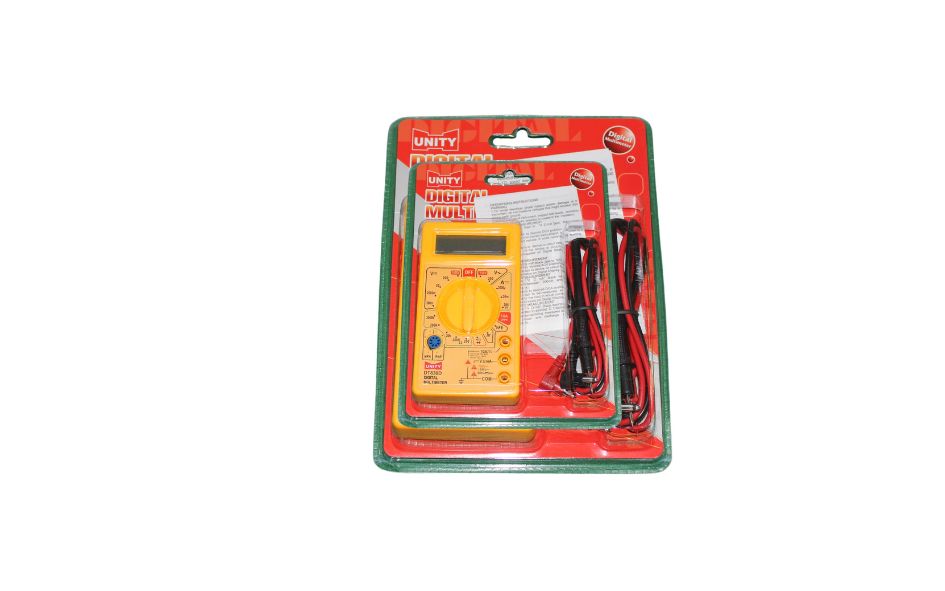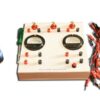PARALLEL CONNECTION OF RESISTORS WORKING MODEL
SCIENCE LAB EQUIPMENT WORKING MODEL / SCIENCE EXHIBITION WORKING MODEL
5 in stock
Refund
Unfortunately, once an order is placed, there is no refund available. However, we do offer exchanges for defective or damaged items.
Due to the nature of our products and the potential for misuse or mishandling, we do not offer refunds. We believe in customer satisfaction and strive to provide quality exchanges for any issues that may arise.
If you have received a defective or damaged item, please contact our customer service team and they will assist you with the exchange process. Please note that exchanges are subject to availability and product conditions.
We do not offer refunds for change of mind purchases, but we do offer exchanges for valid reasons such as defects or damages.
Delivery
My Science Kart delivers orders through a reliable and efficient shipping service to ensure your products arrive safely and on time.
Yes, you can easily track your order from My Science Kart by using the tracking number provided to you once your order has been shipped.
If you have any issues with your order from My Science Kart, please contact our customer service team who will be happy to assist you and resolve any problems.
Payment
You can pay for your purchases on My Science Kart using various payment methods such as credit/debit cards, net banking, UPI’s and mobile wallets.
Yes, we use industry-standard encryption technology to protect your payment information and ensure that it is secure.
If you have any payment-related queries or issues on My Science Kart, you can contact our customer support team through the website or email us at support@mysciencekart.com.
PARALLEL CONNECTION OF RESISTORS
Absolutely! Let’s delve into the parallel connection of resistors:
**Definition:**
In a parallel connection of resistors, resistors are connected across the same two points, providing multiple paths for the current to flow. Each resistor has the same voltage across its terminals.
**Characteristics:**
1. **Multiple Paths:** In a parallel circuit, there are multiple paths for the flow of current. Each resistor is connected directly across the voltage source, providing a separate path for the current to flow.
2. **Voltage Across Resistor:** Since each resistor is connected directly across the voltage source, they all have the same voltage across their terminals. This voltage is equal to the voltage of the source.
3. **Different Currents:** Unlike in series circuits, where the current remains the same, the current in a parallel circuit is divided among the branches according to the resistance of each branch. The current flowing through each resistor depends on its resistance and Ohm’s Law I = V / R
4. **Additive Conductance:** The total conductance (\(G_total}}) in a parallel circuit is the sum of the conductancesG1, G2, G3, etc.) of each branch. Conductance is the reciprocal of resistance G = 1/R
5. **Equivalent Resistance:** The total resistance (\(R_total) of resistors in parallel is less than the smallest individual resistance. It can be calculated using the formula for parallel resistance (R_total = 1/R1 + 1/R2 + 1/R3 + …….).
**Applications:**
1. **Voltage Regulation:** Parallel resistor networks are commonly used in voltage regulator circuits to provide a stable output voltage.
2. **Current Sharing:** In power supply circuits, parallel resistors can be used to share the current load among multiple branches, ensuring uniform distribution of current.
3. **Fault Tolerance:** Parallel connections provide redundancy in circuits, ensuring that if one resistor fails, the others can still function.
**Teaching Suggestions:**
– Use circuit diagrams and schematic representations to illustrate parallel connections of resistors.
– Conduct hands-on experiments with resistors connected in parallel to demonstrate the relationship between voltage, current, and resistance.
– Encourage students to calculate total conductance and resistance in parallel circuits using the formulas provided.
– Discuss practical applications of parallel resistor networks in various electronic devices and circuits.
Characteristics:
- Voltage Drop:
- The voltage drop across each resistor in parallel is the same and equal to the total voltage applied across the parallel combination.
- Current Division:
- The total current entering the parallel combination is divided among the individual resistors based on their resistance values.
- Resistors with lower resistance values will carry more current than those with higher resistance values.
Application:
- Parallel connection of resistors is commonly used in circuit design to achieve specific voltage and current requirements.
- It allows for customization of resistance values to match the desired operating conditions of the circuit.
Example:
- Consider a circuit with two resistors (�1R1 and �2R2) connected in parallel. If a voltage �V is applied across the parallel combination, the current flowing through each resistor can be calculated using Ohm’s Law, and the equivalent resistance �eqReq can be determined using the reciprocal formula.
Conclusion:
Parallel connection of resistors provides flexibility in circuit design by allowing customization of resistance values and current distribution. By understanding the principles and characteristics of parallel connection, engineers can design circuits with desired performance and functionality.
| Weight | 0.5 kg |
|---|---|
| Dimensions | 25 × 25 × 5 cm |
You must be logged in to post a review.
Q & A
Related Products
REFRACTION THROUGH GLASS SLAB AND REFRACTIVE INDEX OF THE GLASS SLAB WORKING MODEL
- ✓ 100% Quality products
SEPARATING IRON FROM THE SOIL WORKING MODEL
- ✓ 100% Quality products
KIRCHHOFF'S JUNCTION LAW WORKING MODEL
- ✓ 100% Quality products
OERSTED EXPERIMENT WORKING MODEL
- ✓ 100% Quality products
OHM'S LAW WORKING MODEL
- ✓ 100% Quality products
a. NATURE OF MATERIAL AND RESISTANCE b. LENGTH OF CONDUCTOR AND RESISTANCE c. CROSS SECTION AREA AND RESISTANCE WORKING MODEL
- ✓ 100% Quality products
MAGNETIC FIELD DUE TO STRAIGHT WIRE CARRYING CURRENT WORKING MODEL
- ✓ 100% Quality products
RESISTANCE PENCIL WORKING MODEL
- ✓ 100% Quality products
Product categories
- Circuits & Projects 233
- My Science Kart 665
- Raw Materials For Projects & Lab Equipments 381
- Science Exhibition 516
- Science Exhibition Projects & Working Models 344
- Biology Science Exhibition Projects & Working Models 31
- Chemistry Science Exhibition Projects & Working Models 12
- Mathematics Science Exhibition projects & Working Models 7
- Physics Science Exhibition Projects & Working Models 129
- Robotics Science Exhibition Projects & Working Models 23
- Social Science Exhibition Projects & Working Models 20
- Science Lab Equipments With Working Models 363
Cart
TRULY INDIAN EDUCATION BRAND
Over 10,000+ Happy Customers
My Science Kart
Address:- Ground floor, Lakshmi Nagar, D.No:- 40-1/1-5, PVP Mall Backside, Mogalrajapuram, Labbipet, Vijayawada, Andhra Pradesh 520010
7673977997, 0866-3543677
mysciencekart@gmail.com
Categories
MAP
© My Science Kart 2024, Designed & Developed By Synfocy Tech Solutions

























Reviews
There are no reviews yet